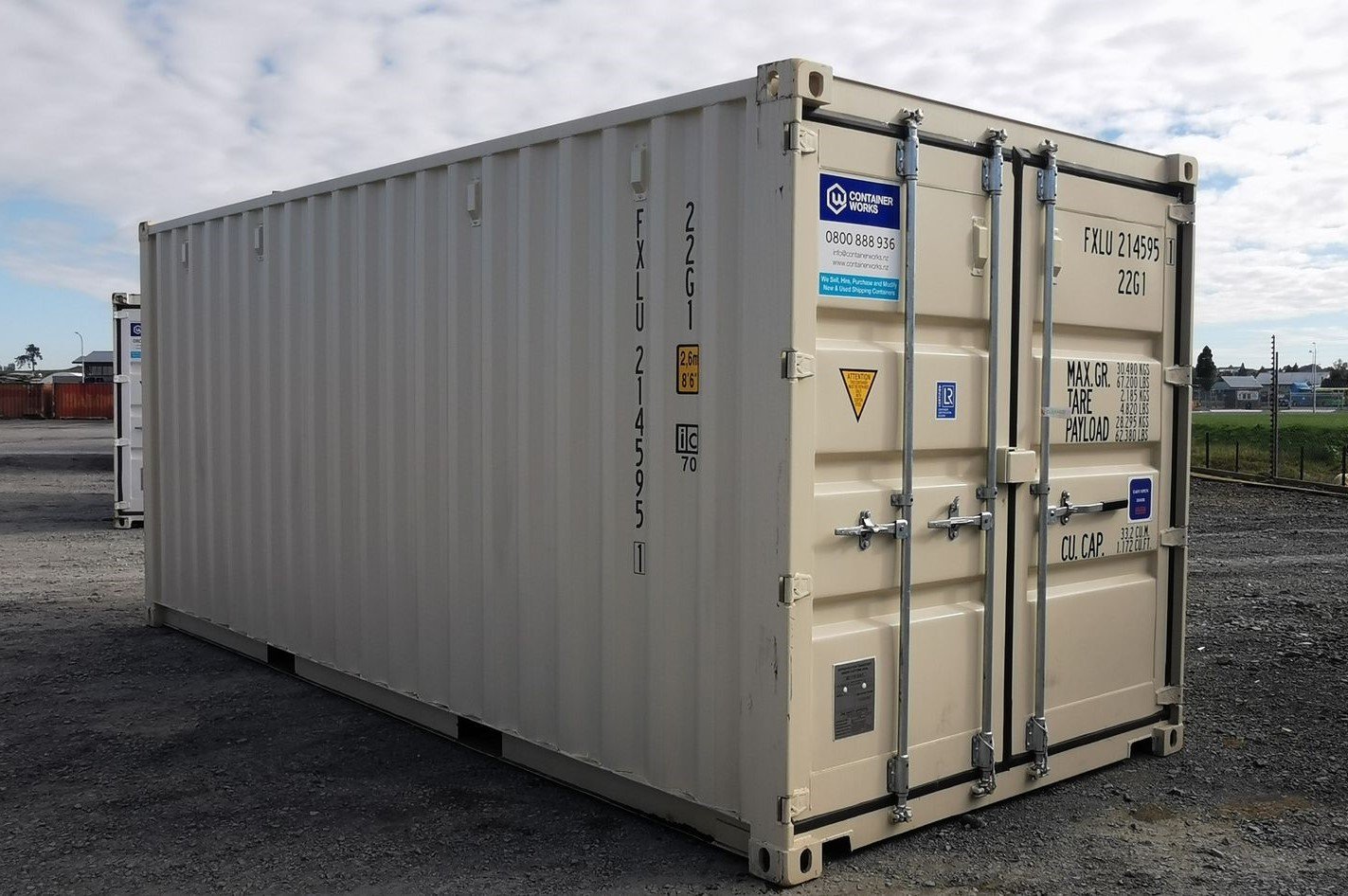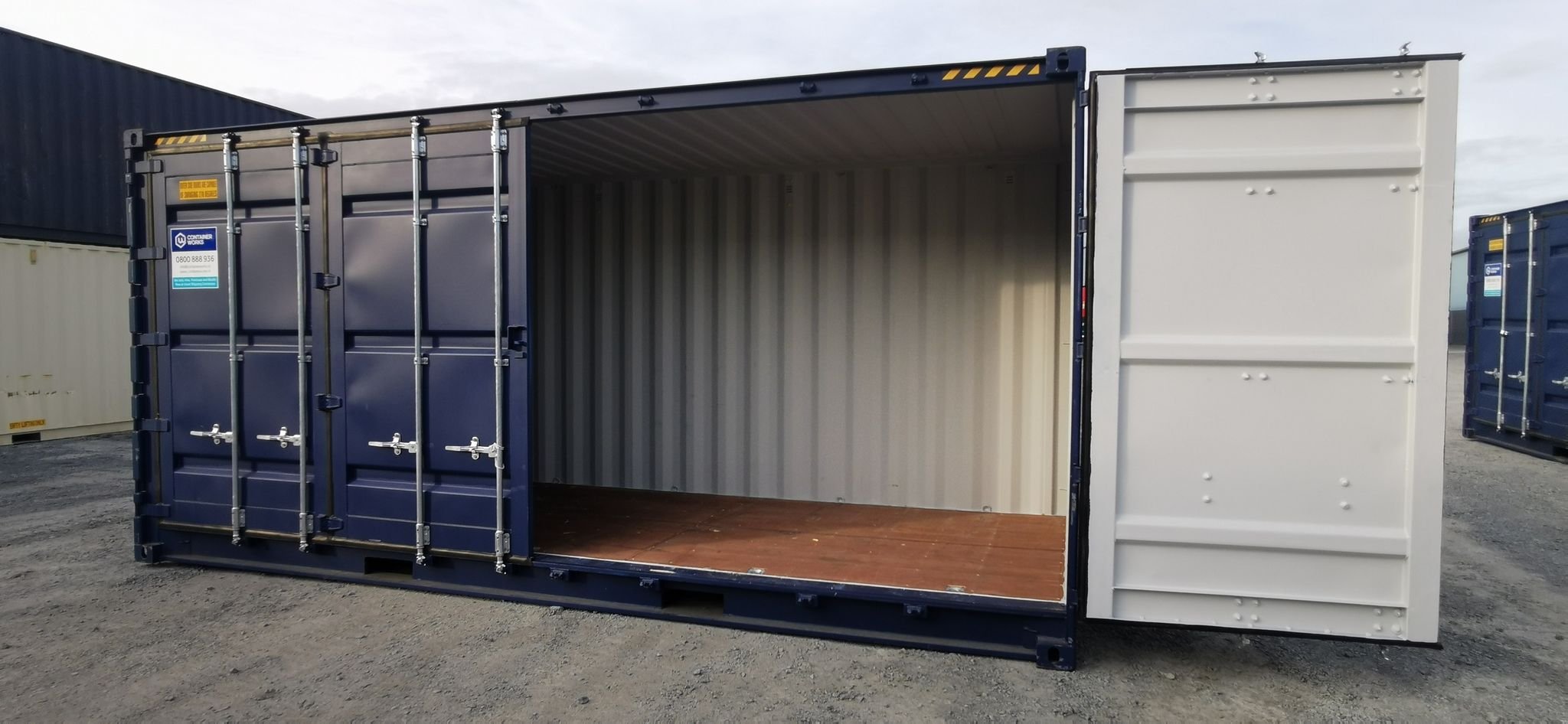Container 101: Helpful Terms
Shipping containers are incredibly versatile, but chances are you may have never paid much attention to them before. Whether you're looking to rent, buy, or simply understand your options, it's helpful to know some key terms. To get you started, we’ve put together a glossary of common shipping container terms. Let’s break it down!
General Purpose (GP) Container
A General Purpose (GP) container, also called a dry container, is the standard shipping container without insulation or refrigeration. It’s used for general cargo/goods that don’t require temperature control. These containers are typically 8’6” high (2.6m).
High-Cube (HC) Container
A high-cube container is slightly taller than a standard GP container, these are 9'6" (2.9m) instead of 8'6". This extra headroom makes high-cubes ideal for storing bulkier items or for modification projects where additional headroom/vertical space is appreciated.
10’, 20’ and 40’
These are just three common shipping container sizes. The size refers to the length of the container with 10’ being 3m, 20’ being 6m and 40’ being 12m.
Box
"Box" is simply a slang term for a shipping container.
Reefer
A "reefer" is a refrigerated container equipped with an internal refrigeration unit to keep goods cool during transport or storage. Reefers are perfect for storing perishable items like food or beverage products. When a reefer is non-operational, it’s often referred to as an insulated container.
Double Door / 3-Door Container
A double-door container has doors at both ends, offering easy access and flexibility. This is especially useful for loading bulky or long items. A 3-door container has standard doors at one end and a single container door at the other for added accessibility.
Side-Opening / Open-Side Container
This type of container has side doors, providing full access from one side in addition to the standard end doors. It’s perfect for loading oversized or awkwardly shaped items that wouldn't easily fit through the end doors.
CSC Plate
A CSC plate is a safety approval tag certifying that the container has passed inspection and meets international shipping standards. It’s essential for containers used in overseas transport. New “1 Trip” containers come with a CSC plate valid for five years from the build date.
Flat Rack Container
Flat rack containers feature collapsible sides, making them ideal for transporting oversized or awkwardly shaped cargo like heavy machinery or vehicles. The open sides provide flexibility during loading and unloading.
Delivery Terms:
If you're arranging to have your container delivered, here are some key terms to know:
Hiab
A Hiab is a truck equipped with a crane, often used for delivering 20-foot shipping containers. The crane can lift and precisely place the container in your desired location, making it ideal for tighter spaces or sites with specific positioning needs.
Swinglift/Sideloader
A Swinglift is a specialized truck which will lift and unload containers using side-mounted lifting arms, used for delivering 40-foot containers or full 20’ containers. The Swinglift unloads the container on the driver’s side and places it next to the truck, which is especially efficient for larger containers.
Why should you know these terms?
Understanding these terms will help you make informed decisions when choosing a container for your storage, shipping, or modification needs. Whether you’re looking to buy a high-cube container for extra space or rent a reefer for temperature-sensitive goods, knowing the basics ensures you get exactly what you need.
Still unsure which container is right for you? Don’t worry! The Container Works team is here to help simplify the process—just reach out, and we’ll guide you through your options.









